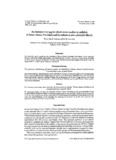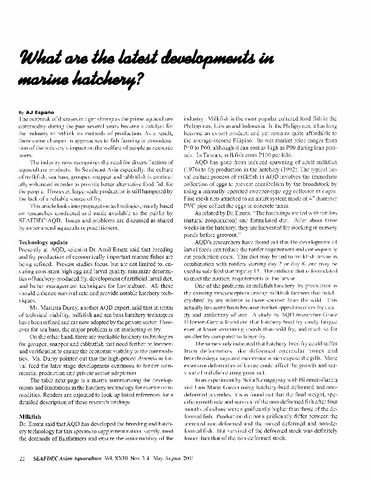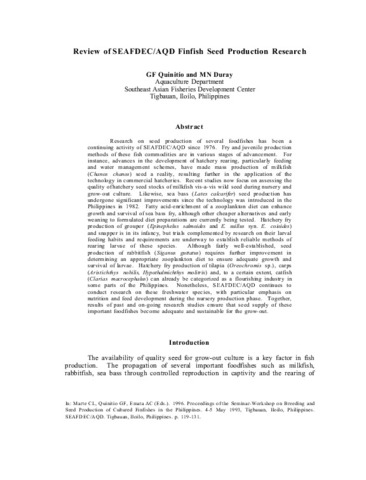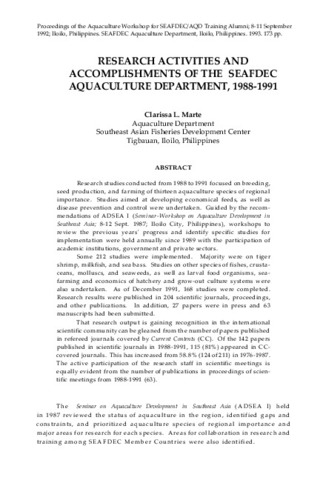An inexpensive tag for short-term studies in milkfish (Chanos chanos Forsskal) and in seabass (Lates calcarifer Bloch)
- Global styles
- MLA
- Vancouver
- Elsevier - Harvard
- APA
- Help

View/
Date
1988Page views
2,722ASFA keyword
AGROVOC keyword
Taxonomic term
Metadata
Show full item record
Share
Abstract
An opercular tag for marking adult milkfish (Chanos chanos Forsskal) and seabass (Lates calcarifer Bloch) is described. High tag retention and relatively low mortality rates were observed in adult fish handled two to ten times during 14-to 60-day tests. The features and advantages of the tag for marking large-sized fish in short-term studies are discussed.
Suggested Citation
Garcia, L. M., & Gapasin, R. S. J. (1988). An inexpensive tag for short-term studies in milkfish (Chanos chanos Forsskal) and in seabass (Lates calcarifer Bloch). Journal of Applied Ichthyology , 40(3), 101-104. https://doi.org/10.1111/j.1439-0426.1988.tb00548.x
Type
ArticleISSN
1439-0426Collections
- Journal Articles [1258]
Related items
Showing items related by title, author, creator and subject.
-
What are the latest developments in marine hatchery?
Españo, A. J. (Aquaculture Department, Southeast Asian Fisheries Development Center, 2001) -
Review of SEAFDEC/AQD finfish seed production research
Quinitio, G. F.; Duray, M. N. (Aquaculture Department, Southeast Asian Fisheries Development Center, 1996)Research on seed production of several foodfishes has been a continuing activity of SEAFDEC/AQD since 1976. Fry and juvenile production methods of these fish commodities are in various stages of advancement. For instance, ... -
Research activities and accomplishments of the SEAFDEC Aquaculture Department, 1988-1991
Marte, Clarissa L. (Aquaculture Department, Southeast Asian Fisheries Development Center, 1993)Research studies conducted from 1988 to 1991 focused on breeding, seed production, and farming of thirteen aquaculture species of regional importance. Studies aimed at developing economical feeds, as well as disease ...






